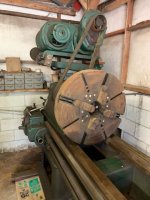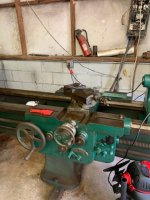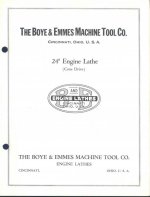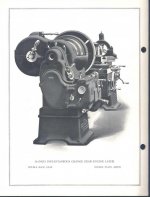TheJellyman
Plastic
- Joined
- Jul 23, 2019
Hi everybody, First thread so excuse if I've confused any of the rules as far as titles and tags. So a buddy of mine at work recently told me about a shop that had been closed down 20+ years loaded full of equipment. The land has been sold and this coming weekend will be when I plan to grab a lathe that I believe is a boye & emmes 24". The challenge I'm having as far as info is it's not just got a 4 jaw 24" chuck but its 264"(22') LONG! This thing is massive, and still runs so I plan to take possession in a few days. My buddy has been scrubbing it down the last 2 months and is the one who wired it up and actually brought it back to life but it's just to big to be at his shop and I think it's in way to good of shape to be sent to the scrap yard. From what I have been told it was not originally electric which kinda has me lost on a manufacturing date. Google, the search engine here and a few other places have shown me SIMILAR lathes but nothing this size. Any info at all id appreciate. TIA










Last edited:






